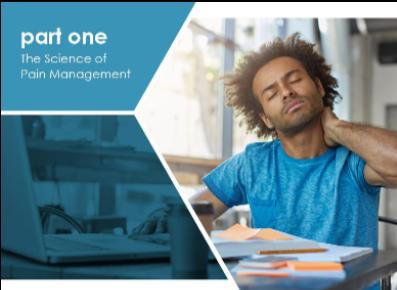Medical Pain Management: What You Need to Know – PART 1: The Science of Pain Management

- posted: Aug. 12, 2020
Did you know that chronic pain is the leading cause of long-term disability in the country? According to a report from the Institute of Medicine (IOM), over 100 million Americans suffer from chronic pain, at a cost of around $600 billion per year in medical treatments and lost productivity. Furthermore, one in 10 Americans has experienced pain every day for three months or more. The pain is so intense that it makes it difficult for them to sleep, work and maintain a comfortable lifestyle.
What Is Pain?
Before attempting to treat your pain, it helps to understand how pain is defined. As per the International Association for the Study of Pain, pain is “an unpleasant sensory and emotional experience.” Pain is our body’s way of reacting to unfortunate incidents, such as illness or injury. However, it’s important to note that pain is measured by and is unique to each individual who experiences it based on his or her perception of the pain—therefore, everyone’s pain is different. For example, if a person is depressed or is fearful of pain, he or she may experience it more severely than someone who has pain but is not experiencing those emotions.
How to Deal With Pain
The most effective way to minimize pain is to treat the root cause. While it can be difficult to eliminate your pain completely, it’s possible to decrease the pain level so you can feel more comfortable in performing your daily activities. Pain management can help you with that.
Generally, there are two types of pain control approaches:
- Medicine – Different drugs are formulated to help lower the level of pain you’re feeling. These medications differ depending on the kind of pain you have. For instance, if you’re suffering from a nerve block, a shot of medicine can be put close to the nerves around the area that hurts to break the pain cycle. Other types of medicines are those taken orally, inhaled or administered through an epidural. Some medicines, however, can cause unpleasant side effects, which is why it’s vital to follow a specialist’s advice about how to prevent such problems.
- Non-Drug Pain Control Methods – You may be surprised to learn that there are many pain control techniques that can help you deal with pain other than taking medicines. Practicing some of these techniques can eventually help make it more comfortable for your body to move and can relieve your pain. Depending on your condition, some of the techniques you can consider are acupuncture, hydrotherapy, TENS, spinal cord stimulation, massage therapy and physical therapy.
Massage therapy is one simple, yet effective way to relax your muscles and minimize pain. Learn about this pain management approach in the second part of this three-part blog series!

- posted: Aug. 12, 2020
Did you know that chronic pain is the leading cause of long-term disability in the country? According to a report from the Institute of Medicine (IOM), over 100 million Americans suffer from chronic pain, at a cost of around $600 billion per year in medical treatments and lost productivity. Furthermore, one in 10 Americans has experienced pain every day for three months or more. The pain is so intense that it makes it difficult for them to sleep, work and maintain a comfortable lifestyle.
What Is Pain?
Before attempting to treat your pain, it helps to understand how pain is defined. As per the International Association for the Study of Pain, pain is “an unpleasant sensory and emotional experience.” Pain is our body’s way of reacting to unfortunate incidents, such as illness or injury. However, it’s important to note that pain is measured by and is unique to each individual who experiences it based on his or her perception of the pain—therefore, everyone’s pain is different. For example, if a person is depressed or is fearful of pain, he or she may experience it more severely than someone who has pain but is not experiencing those emotions.
How to Deal With Pain
The most effective way to minimize pain is to treat the root cause. While it can be difficult to eliminate your pain completely, it’s possible to decrease the pain level so you can feel more comfortable in performing your daily activities. Pain management can help you with that.
Generally, there are two types of pain control approaches:
- Medicine – Different drugs are formulated to help lower the level of pain you’re feeling. These medications differ depending on the kind of pain you have. For instance, if you’re suffering from a nerve block, a shot of medicine can be put close to the nerves around the area that hurts to break the pain cycle. Other types of medicines are those taken orally, inhaled or administered through an epidural. Some medicines, however, can cause unpleasant side effects, which is why it’s vital to follow a specialist’s advice about how to prevent such problems.
- Non-Drug Pain Control Methods – You may be surprised to learn that there are many pain control techniques that can help you deal with pain other than taking medicines. Practicing some of these techniques can eventually help make it more comfortable for your body to move and can relieve your pain. Depending on your condition, some of the techniques you can consider are acupuncture, hydrotherapy, TENS, spinal cord stimulation, massage therapy and physical therapy.
Massage therapy is one simple, yet effective way to relax your muscles and minimize pain. Learn about this pain management approach in the second part of this three-part blog series!
Our Hours
Primary Office
Monday
8:00 am - 6:00 pm
Tuesday
2:00 pm - 6:00 pm
Wednesday
8:00 am - 6:00 pm
Thursday
2:00 pm - 6:00 pm
Friday
8:00 am - 12:00 pm
Saturday
Closed
Sunday
Closed

